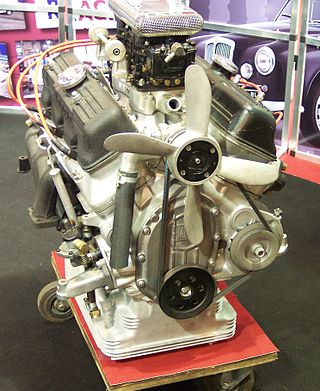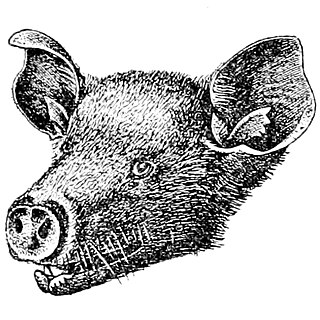
ISO 216 is an international standard for paper sizes, used around the world except in North America and parts of Latin America. The standard defines the "A", "B" and "C" series of paper sizes, which includes the A4, the most commonly available paper size worldwide. Two supplementary standards, ISO 217 and ISO 269, define related paper sizes; the ISO 269 "C" series is commonly listed alongside the A and B sizes.

The 1st Infantry Division (1ID) is a combined arms division of the United States Army, and is the oldest continuously serving division in the Regular Army. It has seen continuous service since its organization in 1917 during World War I. It was officially nicknamed "The Big Red One" after its shoulder patch and is also nicknamed "The Fighting First." The division has also received troop monikers of "The Big Dead One" and "The Bloody First" as puns on the respective officially sanctioned nicknames. It is currently based at Fort Riley, Kansas.

Ankara Province is a province and metropolitan municipality of Turkey with the capital city Ankara. Its area is 25,632 km2, and its population is 5,782,285 (2022).

Melody Maker was a British weekly music magazine, one of the world's earliest music weeklies; according to its publisher, IPC Media, the earliest. It was founded in 1926, largely as a magazine for dance band musicians, by Leicester-born composer, publisher Lawrence Wright; the first editor was Edgar Jackson. In January 2001, it was merged into "long-standing rival" New Musical Express.

Compact car is a vehicle size class—predominantly used in North America—that sits between subcompact cars and mid-size cars. "Small family car" is a British term and a part of the C-segment in the European car classification. However, before the downsizing of the United States car industry in the 1970s and 1980s, larger vehicles with wheelbases up to 110 in (2.79 m) were considered "compact cars" in the United States.

The Ford Pinto engine was the unofficial name for a four-cylinder internal combustion engine built by Ford Europe. In Ford sales literature, it was referred to as the EAO or OHC engine and because it was designed to the metric system, it was sometimes called the "metric engine". The internal Ford codename for the unit was the T88-series engine. European Ford service literature refers to it as the Taunus In-Line engine. In North America it was known as the Lima In-Line (LL), or simply the Lima engine due to its being manufactured at Lima Engine in Lima, Ohio.

The Nissan S30, sold in Japan as the Nissan Fairlady Z and in other markets as the Datsun 240Z, then later as the 260Z and 280Z, is a grand tourer produced by Nissan from 1969 until 1978. The S30 was conceived of by Yutaka Katayama, the President of Nissan Motor Corporation U.S.A., and designed by a team led by Yoshihiko Matsuo, the head of Nissan's Sports Car Styling Studio. It is the first car in Nissan's Z series of sports cars.

The Glyn Valley Tramway was a narrow-gauge railway that ran through the Ceiriog Valley in north-east Wales, connecting Chirk with Glyn Ceiriog in Denbighshire. The gauge of the line was 2 feet 4+1⁄4 inches (718 mm) while it was horse-drawn, which was unofficially increased to 2 ft 4+1⁄2 in when steam locomotives were introduced. The total length of the line was 8+1⁄4 miles (13.3 km), 6+1⁄2 miles (10.5 km) of which were worked by passenger trains, the remainder serving a large granite quarry and several minor slate quarries.

In 1950, Lancia introduced one of the world's first production V6 engines in the Lancia Aurelia. The engine was the work of Francesco De Virgilio and was developed to solve the vibration problems Lancia had experienced with its V4 engines. This was achieved by setting the vee angle to 60 degrees. It remained in production through 1970. Lancia used V6 engines in road and sports cars, the D20 had a 60 degree quad cam V6 2962 cc 217 bhp engine and the D24 3300 cc V6 engine.

The Chrysler Hemi engine, known by the trademark Hemi or HEMI, refers a series of high-performance American overhead valve V8 engines built by Chrysler with hemispherical combustion chambers. Three generations have been produced: the FirePower series from 1951 to 1958; a famed 426 cu in (7.0 L) race and street engine from 1964-1971; and family of advanced Hemis (displacing between 5.7 L 6.4 L from 2003 to 2024.

The Cléon-Alu engine, also known under the code "A engine" or "A-Type" is an automotive gasoline internal combustion engine, developed and produced by Renault in 1960. A four-stroke inline four-cylinder design with aluminium-alloy block and cylinder head, it was water cooled, with a five main bearing crankshaft and a side-mounted chain-driven camshaft operating eight overhead valves via pushrods and rockers. It made its debut appearance on the Renault 16.

The Buckquoy spindle-whorl is an Ogham-inscribed spindle-whorl dating from the Early Middle Ages, probably the 8th century, which was found in 1970 in Buckquoy, Birsay, Orkney, Scotland. Made of sandy limestone, it is about 36 mm in diameter and 10 mm thick. It is the only known spindle-whorl with an Ogham inscription.

The 3"/50-caliber gun in United States naval gun terminology indicates the gun fired a projectile 3 inches (76 mm) in diameter, and the barrel was 50 calibers long. Different guns of this caliber were used by the U.S. Navy and U.S. Coast Guard from 1900 through to 1990 on a variety of combatant and transport ship classes.

The Ferrari 312 P was a Group 6 Prototype-Sports Car used for racing in 1969 and 1970. The new 1971 version of the sports prototype came with a flat-12 engine, often referred to as a boxer engine.

The Jamaican flower bat is a critically endangered species of bat in the family Phyllostomidae. It is endemic to Jamaica.

The Shinkai (しんかい) was a crewed research submersible that could dive up to a depth of 600 m. It was completed in 1970, and until 1981 it had the greatest depth range of any crewed research vehicle in Japan. The Shinkai is owned and run by the Japan Coast Guard and it is launched from the support vessel Otomemaru (乙女丸).
The aspect ratio of an image is the ratio of its width to its height. It is expressed as two numbers separated by a colon, width:height. Common aspect ratios are 1.85:1 and 2.40:1 in cinematography, 4:3 and 16:9 in television, and 3:2 in still photography.

750 mm narrow-gauge railways are very similar to 760 mm and 2 ft 6 in gauge. 750 mm gauge rolling stock is almost compatible with 760 and 762 mm railways.

The Delhi–Jaipur line connects New Delhi, the capital of India with Jaipur, the capital of Rajasthan. Further it is linked with the Jaipur-Ahmedabad line and the Ahmedabad-Mumbai main line.
The Ferrari 612P, is a purpose-built Group 7 prototype, designed, developed and built by Scuderia Ferrari, specifically intended to be used in the North American Can-Am sports car racing series in 1968 and 1969.

















